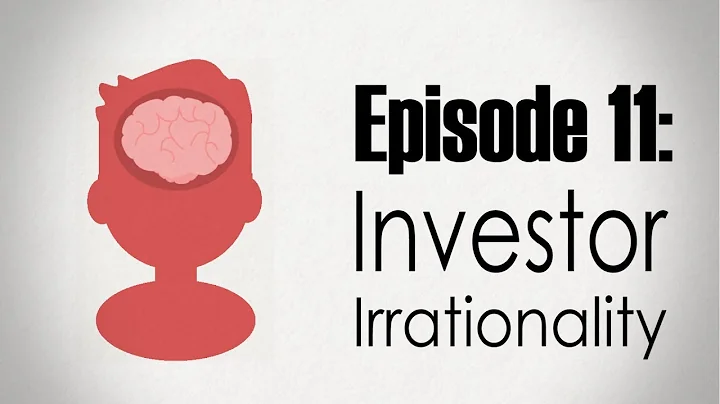What are the limitations of behavioral finance?
Here are some of the limitations of behavioral finance theories: 1. Limited predictive power: Behavioral finance theories are often based on past events and may not have predictive power in future situations. Human behavior is complex and can be influenced by many factors, making it difficult to predict with accuracy.
It's an economic theory that explains often irrational financial behavior, such as overspending on credit cards or panic selling during a market downturn. People often make financial decisions based on emotions rather than rationality.
Reduces Confidence: Another big problem with behavioral finance theory is that it drastically reduces investor confidence. After reading these theories, many investors have reported that they face difficulties while making decisions. This is because investors start second-guessing themselves.
Addressing Behavioral Finance Challenges
Behavioral finance research shows emotions influence investor decisions, often to their detriment. The most powerful emotion is loss aversion, which drives panic selling. The second is herding, which drives return chasing and narrow framing.
Behavioral finance combines psychology and economics, it was first introduced in the work of (Kahneman and Tversky, 1979). It attributes the imperfections in financial markets to several human cognitive biases and various human errors in reasoning and information processing.
Example: Another classic example of behavioural finance in action is the tendency for investors to practice Loss Aversion. Many investors hold on to losing stocks for too long, hoping for a rebound.
Behavioral finance asserts that rather than being rational and calculating, people often make financial decisions based on emotions and cognitive biases. For instance, investors often hold losing positions rather than feel the pain associated with taking a loss.
These include: Limited Focus: Behavioral management tends to focus primarily on observable behaviors and neglects other aspects such as attitudes, emotions, and individual differences. This narrow focus can limit the understanding of complex human behavior and the underlying causes of certain behaviors.
The first weakness lies in the incomplete realistic characterisation of behavioural economics theory that is the central theoretical pillar of Nudge theory. The second weakness is even more relevant. The normative model of behavioural economics is neoclassical rationality.
Here, we highlight five prominent behavioral biases common among investors. In particular, we look at loss aversion, anchoring bias, herd instinct, overconfidence bias, and confirmation bias. Loss aversion occurs when investors care more about losses than gains.
How do you overcome behavioral finance?
It's important to focus on facts rather than the recent events or presentation of data. A systematic and rational approach to investing can help us overcome our biases. This approach involves conducting thorough research, diversifying our portfolio, and adhering to a long-term strategy.
- R #1: Recognize the Situation. ...
- R #2: Reflect on Your Values. ...
- R#3: Reframe Your Viewpoint. ...
- R#4: Respond Purposefully.

Emotional gap: The emotional gap refers to decision-making based on extreme emotions or emotional strains such as anxiety, anger, fear, or excitement. Oftentimes, emotions are a key reason why people do not make rational choices.
Market inefficiencies: Behavioral finance recognizes that investors are not always rational and can be influenced by cognitive biases and emotions. This can lead to market inefficiencies and anomalies, such as overvalued or undervalued stocks.
Behavioral finance is the study of how psychological influences, such as emotions like fear and greed, as well as conscious and subconscious bias, impact investors' behaviors and decisions. It removes the misconception that investors always make rational decisions that are in their best interest.
Behavioral finance is the study of the effects of psychology on investors and financial markets. It focuses on explaining why investors often appear to lack self-control, act against their own best interest, and make decisions based on personal biases instead of facts.
Behavioral finance is the study of the influence of psychology on the behavior of investors or financial analysts. It also includes the subsequent effects on the markets. It focuses on the fact that investors are not always rational, have limits to their self-control, and are influenced by their own biases.
Behavioral finance meaning describes the occurrence of irrational financial decisions of an entity by connecting it to human psychology. The study demonstrates different psychological influences and biases affecting the financial decisions of market players and subsequent market outcomes.
A cognitive bias is a systematic flaw in reasoning that can lead to making wrong decisions while investing. A common maxim in investing is that 'you are your own worst enemy.
Clearly, something else is at play here – cognitive bias and limits to arbitrage. These are the two pillars of behavioural finance. Both offer answers to how emotions and biases affect share prices and financial markets.
What is the conclusion of behavioral finance?
Conclusion. Behavioural finance shows that individuals may not necessarily make decisions on the basis of a rational analysis of all the information.
Behavioural finance helps us in understanding why people usually do not make the decisions that they are supposed to, just like why the market acts unreliably at times.
The behavioral theory of leadership provides leaders with flexibility, but this also means it doesn't provide recommendations for how to respond in specific situations. This may feel challenging if you're experiencing something new that you don't know how to resolve.
- STRENGTH: Scientific credibility. ...
- STRENGTH: Real-life application. ...
- WEAKNESS: Mechanistic view of behaviour. ...
- WEAKNESS: Environmental determinism. ...
- WEAKNESS: Ethical and practical issues in animal experiments.
Behavioral economics assumes irrationality in decision making. As such, individuals are susceptible to temptations and tend to make poor and rash decisions, even though it is clear there are better options that will improve long-term outcomes.